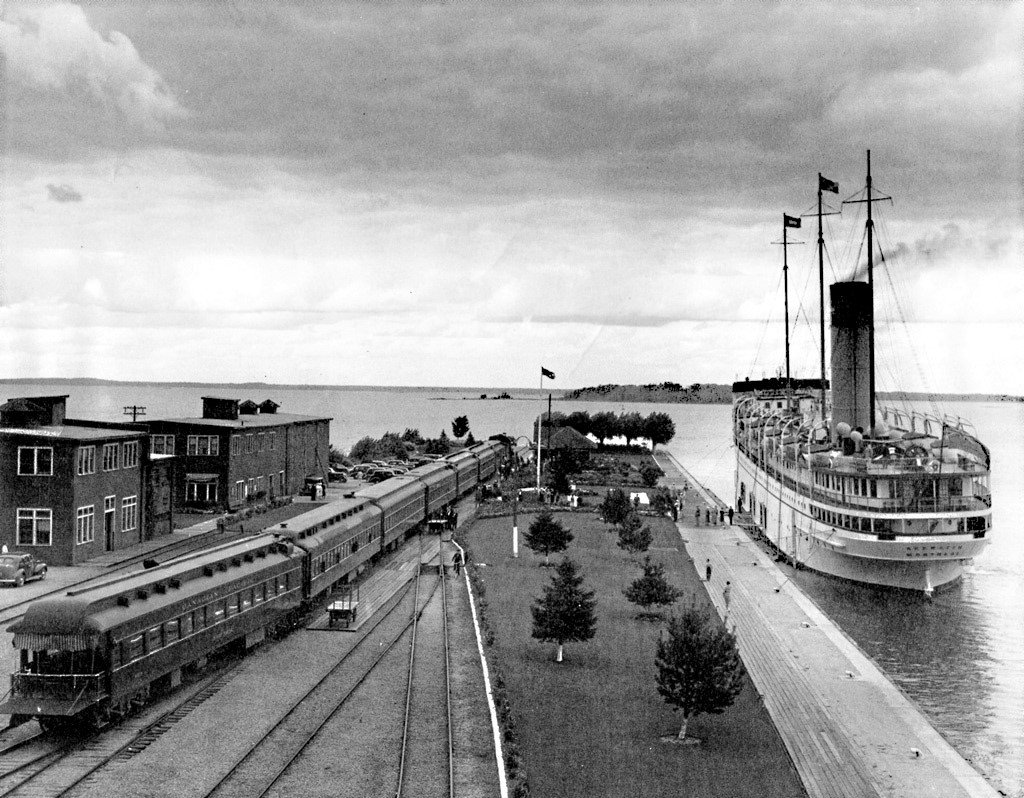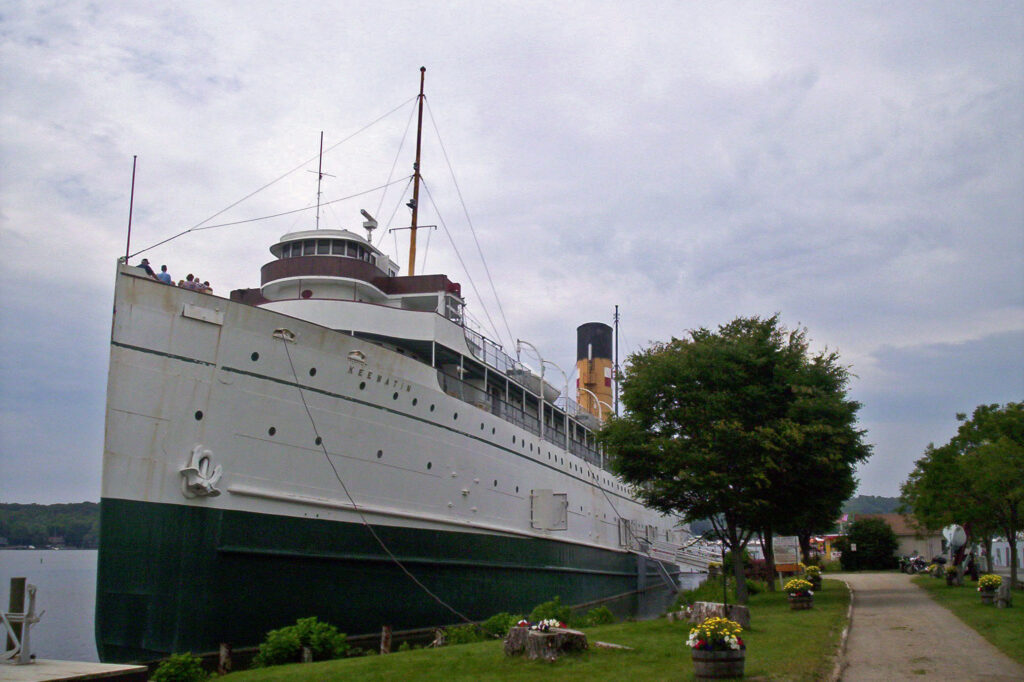Save the SS Keewatin!
The S.S. Keewatin is a steamship currently located in Port McNicoll, Ontario, just under a 2 hour drive north of Toronto. Historically, the ship was owned by the Canadian Pacific Steamship Company and was directly connected to Toronto by the Canadian Pacific Railway. Like many pieces of Canadian transportation history, the Keewatin was purchased by an American entrepreneur and moved to Douglas, Michigan in 1967 where it served as a maritime museum. It was finally moved back to its home port in 2012 and was greeted by a major celebration. Its return was particularly significant as it had been 45 years since leaving Port McNicoll and 100 years since it had first begun working from Port McNicoll’s dock. Since then, Keewatin has become something of a celebrity having been a setpiece of multiple TV shows, films and a CBC documentary. It is currently one of only a handful of Edwardian-era steamships that still survive to this day.
This is why the Friends of the S.S. Keewatin are asking to help save it. According to the petition: “Skyline Investments wants to gift it to Kingston, sell it overseas, or break the ship up and sell it off piecemeal.” The TRHA recognizes the importance of this steamship for its historical value and its importance to Port McNicoll, so we ask that you take a moment to sign the petition which you can find by clicking here.
History of the S.S. Keewatin and its Relation to the John Street Roundhouse
Written by Derek Boles, TRHA Historian
In 1884, the Canadian Pacific Railway inaugurated a triweekly steamship service between Owen Sound and Port Arthur with connecting boat trains between Toronto and Owen Sound. While CPR’s transcontinental route was under construction, this was the primary transportation corridor to western Canada that didn’t involve travelling through the U.S. The manager of CP’s Lake Transportation Services was Henry Beatty, whose son Edward W. Beatty would become the fourth president of the CPR.
In 1908, two new steamships entered this service, the SS Keewatin and SS Assiniboia; each weighed 3,856 tons, and were 336.5 feet long. Both were constructed at Fairfield Shipbuilding in Scotland, who had built the Canadian Pacific transatlantic liners Empress of Britain and the ill-fated Empress of Ireland. After sailing across the Atlantic, the Keewatin was halved at Levis, Quebec because the canals below Lake Erie, specifically the Welland Canal, could not then handle ships as long as Keewatin. The ship was reassembled at Buffalo and continued under its own power to Owen Sound.
The CPR completed its branch line to Port McNicoll in 1912 and transferred its Eastern Great Lakes steamship base from Owen Sound. From May until October for the next half century, boat trains with parlor cars ran between Toronto and Port McNicoll to connect with steamships to and from Port Arthur and Fort William. Some passengers used these steamships solely for the cruising experience; others as a leisurely stage in a transcontinental journey that continued by train after the ships docked.
The boat trains were branded by CPR as “The Steamship Express” and were serviced at the John Street Roundhouse and coach yard. Right up until the end, the trains were typical of the “John Street Polish,” the care that the staff took to make the locomotives and coaches look as attractive as possible. Colour photos taken in the 1950s and early 60s show the trains positively gleaming in the sunlight. In that regard, the boat trains were exemplars of Canadian Pacific excellence during the passenger train era. In addition to coaches, the trains included a first class parlour car and until the 1950s, an observation-parlour car with an open deck on the rear for passengers to appreciate the scenery between Toronto and Port McNicoll before boarding the Keewatin.
When discontinued at the end of the season in 1965, the boat trains provided the last such service in North America. The SS Keewatin, one of the two steamships used in this service, returned to Port McNicoll in June 2012 and is now a museum.
Clearly, there is a symbiotic relationship between the Toronto Railway Museum and the Keewatin and there is historic authenticity in the ship remaining at Port McNicoll, its home port for 55 years.
Posting by Adam Peltenburg.



